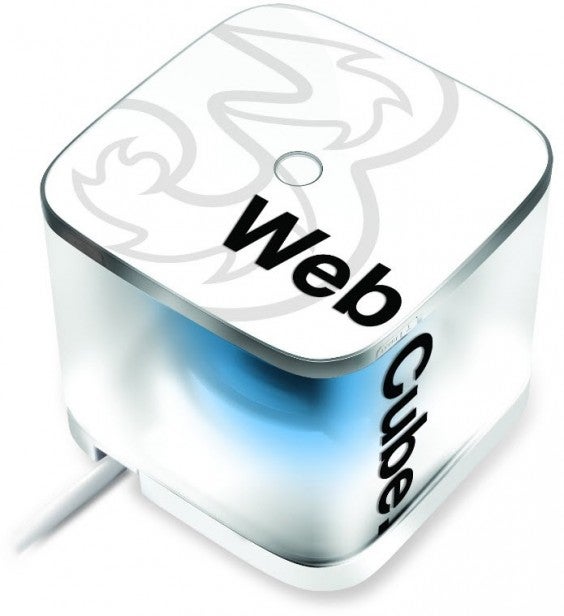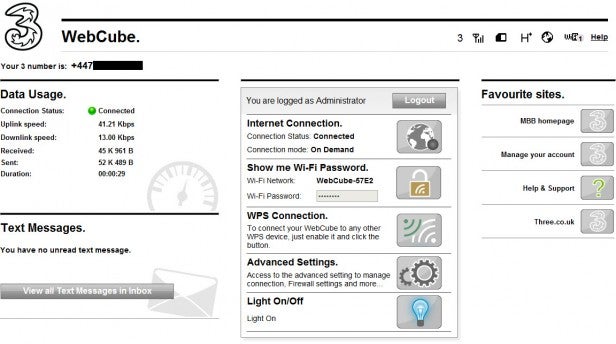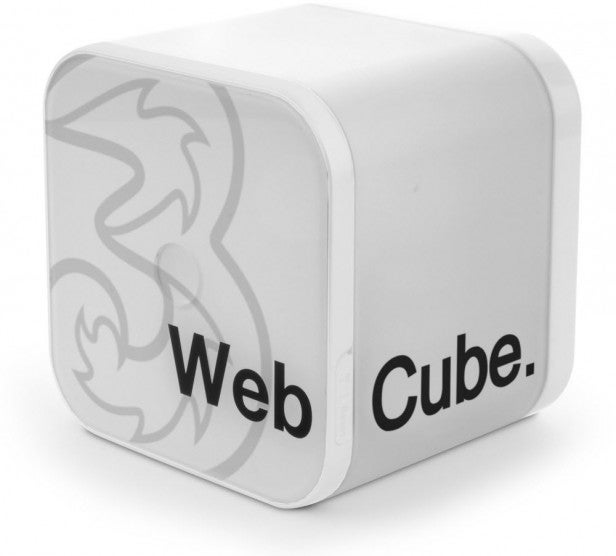Three Web Cube Review
Three Web Cube
Broadband in a box. A saviour for sufferers of slow fixed line broadband connections?

Verdict
Pros
- Impressive signal strength
- Virtually no setup required
- Wide variety of data packages
- Stylish design
Cons
- Speeds vary greatly
- Long term contract required for best value
- MiFi does same job and is portable
Key Specifications
- Review Price: £59.99
- HSPA+ 21.1Mbps
- Max 5 Connected Devices
- Initial Leeds, Glasgow, Edinburgh focus
- Pre-pay or contract data bundles
The launch of the new iPad highlighted one thing in particular to UK consumers: the country’s continued lack of LTE, which is now unlikely to arrive before the end of 2013. LTE remains a dream for many smartphone and laptop owners, but even more so for those suffering fixed line broadband woes all over the country. So bad are these for many that a high quality 3G network could actually still be a relative saviour.
Step forward the Web Cube. Made by Huawei and sold by data friendly network Three, it aims to improve the lives of those either a) hindered by slow fixed line broadband speeds, or b) looking to break dependency from a fixed telephone line completely. The concept is simple: plug the ‘Cube’ into a power socket, connect to the WiFi hotspot it creates and enjoy the ‘up to’ 21.1Mbit HSPA 3G speeds it provides. So is the reality any more complicated?

Life would be boring if we dealt in absolutes, and once again we fall back on a familiar answer: yes and no, but it does make a super first impression. Unpack the Web Cube and two things immediately draw attention. Firstly the Web Cube almost exactly lives up to its name measuring 100 x 100 x 95mm, and secondly it pays a stylish homage to Apple’s legendary iMac G3. Much like Apple’s transparent racing helmet-esque desktop, the Web Cube also offers a cloudy look through to its internals and is finished off with a tasteful white top and bottom. In short if Web Cube stands out against your home furnishings then it is your decorative skills that are at fault.
Beyond the styling the Web Cube is well thought out. Away from a tattoo-style Three logo and branding on the top, this surface also doubles as a signal indicator showing one to three bars of network signal strength. Two removable slots on the sides of the white top pull away to expose a reset button and a sim card slot.
Things get no more complex when it comes to setup. For novices the Web Cube simply plugs into a power socket, flashes to show network status (on = connected, flashing on and off slowly = an absent sim card, on without signal strength = no signal) and then allows you to connect using the wireless key printed on the bottom of the Cube and you are away.

More advanced users do have other setup options available. Once connected type 192.168.1.1 into a web browser to access speed and data usage statuses plus connection settings (automatic/manual connection, connect on-demand) and the ability to switch off the Cube’s status light. Three also sends text messages to this portal to deliver service updates and warn of approaching data limits (which cannot be passed without payment). Yes it can be a pain to check these, but email alerts can also be requested.
Ultimately the Web Cube is so simple your granny could use it, but will she enjoy it? As with any review of a 3G data based product a definitive answer is impossible to say because we can’t test it everywhere. Interestingly Three is targeting the Web Cube initially at customers based in Leeds, Edinburgh and Glasgow where it has its most advanced HSPA network and touts reliable download speeds of 2 – 5Mbit, but from what we witnessed it has the potential to help customers on a far wider scale than that.
Testing the Web Cube in an isolated Northumberland village where fixed line broadband is so bad BT has locked DSL speeds to 0.5Mbit to “stabilise the connection” we found the results a revelation. We regularly hit download speeds in excess of 5Mbit with upload speeds of around 1Mbit. Of some concern was these figures could vary substantially at different times of the day (lows of 0.6 – 1Mbit), but even with Three not promoting the Web Cube outside of its three target cities it still perfectly illustrates the potential of 3G home broadband to free users from DSL hell.

Contrast this with our second scenario in London where fast broadband is plentiful, but a fixed line connection is not always convenient. Again we were able to hit speeds in excess of 5Mbit, but the vastly higher population density meant this could vary even more wildly. Still it remains a viable option. We didn’t get the opportunity to test the Web Cube in Leeds, Edinburgh or Glasgow, though it seems safe to say it shouldn’t perform worse in these locations.
What about pricing? Heavy downloaders won’t be swayed, but packages are competitive. £15pm gets you 10GB per month on a rolling monthly contract plus a £59.99 one off charge for the Cube while a 24 month contract offers 15GB per month for £15.99pm with no upfront charge. Three provides a data guide (pictured) to indicate usage examples. As such the Web Cube does exactly what it sets out to do: (dependent on location) it provides a potentially nippy connection for reasonable cost with virtually no setup that is a viable alternative to fixed line broadband in slow areas or where fixed line isn’t convenient. So why no TrustedReviews Recommended Award?

On its own the Web Cube is an excellent product, but it is actually undermined by another Three product: the HSPA MiFi. Like the Cube it takes advantage of Three’s faster 21.1Mbit network, offers an equally large 15GB for heavy downloaders for only slightly more (£18.99pm) on a 24 month contract and we found no real world difference in reception or performance compared to the Web Cube. Admittedly MiFi tariffs are more expensive when opting for smaller data packages (for example, £15pm for 5GB on a monthly contract) but we assume if you wish to use either as a replacement for your home broadband you will want sizeable data.
Of course the real killer with the MiFi is it is mobile and can be put in a pocket and used on the move, lasting up to five hours on a charge. This allows the MiFi to work not only as your home broadband (it comes with a neat charging dock), but also as the 3G for your laptop and/or tablet eliminating the need for multiple data contracts and saving further expenditure. In this scenario – good as it is – it is hard to see why you would opt for the Web Cube.
”’Verdict”’
In many ways the Web Cube is a triumph. It combines excellent design with virtually no setup and gets users online, fast. We had excellent, if fluctuating, broadband speeds and while the caveat remains that this will vary from area to area, it is backed up by reasonable data costs. Strangely the fly in the ointment is Three itself as its latest HSPA MiFi offers all the same benefits while also working on the move. This makes the MiFi a far more flexible product and (with sizeable data packages) little extra cost. We like the Web Cube a great deal, but there is little reason to choose it in this light.
Trusted Score
Score in detail
-
Performance 7
-
Value 6
-
Features 8
-
Usability 8
-
Design 8

